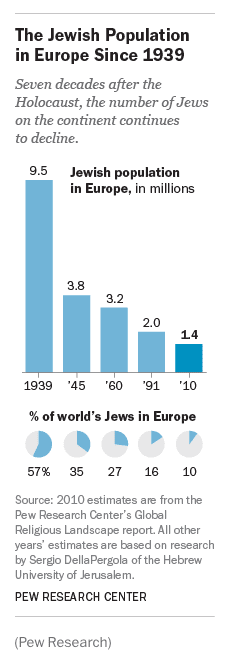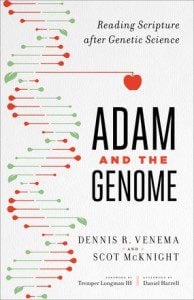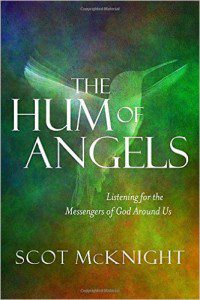 Fear and memory, by Leslie Evans Ogden:
Fear and memory, by Leslie Evans Ogden:
The experience inspired McKinnon, now a clinical psychologist, to study what trauma does to the brain – how it changes what we remember and why some people experience Post Traumatic Stress Disorder (PTSD). In recent years, she and a number of other researchers have been trying to understand what makes fearful experiences seem to become imprinted so deeply in our brains. And if they can understand why trauma has such a profound and lasting effect on us, perhaps they can find ways to help people cope better with the aftermath.
Fearful imprint
The link between fear and memory has intrigued researchers and clinicians for decades. Yet the data is conflicting. “Some studies have found that during the recollection of traumatic events, recollection is enhanced. It’s very vivid, people recall many details, and people don’t seem to have difficulty remembering,” says McKinnon. Other studies have found that recollection of traumatic events can be very impoverished and fragmented, with “a detail here, a detail there, that don’t really fit together”, she explains.
Outrageous, by Chris Mooney:
Late last year we learned that, thanks to human beings, the oceans are carrying at least 5 trillion pieces of floating plastic — or nearly 700 pieces per human alive on the planet. In weight, that’s some 250,000 tons of the stuff.
But new research suggests that even that haul is probably a serious underestimate. In a paper published this week in the journal Science, Jenna Jambeck of the University of Georgia and a group of colleagues tried to estimate the total amount of plastic going into the oceans annually from 192 coastal countries, whose total population is 6.4 billion. People in these countries within 50 kilometers of the coast, the study estimates, produced 99.5 million metric tons of plastic waste in 2010 — and 31.9 of those million tons, the study estimates, were in some way mismanaged.
Thus, the authors calculate, each year about 4.8 million to 12.7 million metric tons of plastic are entering the oceans — for a midpoint figure of around 8 million metric tons. This is vastly higher than the number cited above — and moreover, it’s an annual number.
Very good, very good word from Nancy Beach about Brian Williams:
I have been a fan and faithful viewer of NBC News Anchor Brian Williams for the last decade. Throughout the recent controversy, I continue to hope that some new revelations will explain his actions and even exonerate him. But I am also sobered by the tragic downfall that has resulted from Williams’ apparent violation of God’s commandment not to lie. I think all pastors and teachers – all of us who traffic in a lot of words and story telling – should be shaking in our shoes.
Good study of Marilynne Robinson’s fiction by Natasha Moore:
Enter Marilynne Robinson, stage left, several decades later. To be fair, this tentative post-Eliot resurrection of the religious element in Western literature is no one-woman show. From the mid-twentieth-century novels of Tolkien and C.S. Lewis or Flannery O’Connor to contemporary work by Donna Tartt, Tim Winton, or the poet Christian Wiman, Christian faith has for some time been stealing quietly back into the quasi-mainstream literary limelight. (Not exclusively the Christian variety, either; if the 2014 Booker-shortlisted To Rise Again at a Decent Hour, which turns upon the religious impulse generally and Judaism incidentally, may be taken as indicative of a broader shift, the experience of faith – having, not having, yearning for, being repelled by it – is back, not only in the twenty-first-century world, but in its literature.)
But Robinson’s hushed, hypnotic prose, her everyday world crammed with marvels and calamities, above all the utter nonchalance with which she sets forth her characters’ faith-fraught lives, have made this remarriage of the openly Christian with the incontrovertibly “literary” much harder to ignore.
For Robinson manifestly does not write something we could label “religious literature.” The life of John Ames, the kind old mid-western preacher who narrates Gilead (2004) and appears in Home (2008) and Lila (2014), is suffused with his faith. He does not scramble to explain or defend it; it’s simply who he is, the lens through which he sees and describes his world. His musings on mercy or baptism or death, it turns out, don’t need to make any concessions to the supposed gap between religious thought and experience and a secular reading public. For Robinson to make those concessions would be to falsify Ames’s experience, to grow self-conscious and clumsy.
Robinson’s fiction pays Christian faith the very basic compliment of treating it as within the purview of literature, as a phenomenon in the world and therefore worthy of the kind of turning over in the light that we accord to, well, everything else. Mind of a serial killer? Sure. The routines and rituals of middle-class marriage? The beauty of a barren landscape? You name it. The thoughtful, exuberant, workaday faith of a lifelong believer? That too.
From the Witherspoon Institute:
A new study published in the February 2015 issue of the British Journal of Education, Society, and Behavioural Science appears to be the largest yet on the matter of same-sex households and children’s emotional outcomes. It analyzed 512 children of same-sex parents, drawn from a pool of over 207,000 respondents who participated in the (US) National Health Interview Survey(NHIS) at some point between 1997 and 2013.
Results reveal that, on eight out of twelve psychometric measures, the risk of clinical emotional problems, developmental problems, or use of mental health treatment services is nearly double among those with same-sex parents when contrasted with children of opposite-sex parents. The estimate of serious child emotional problems in children with same-sex parents is 17 percent, compared with 7 percent among opposite-sex parents, after adjusting for age, race, gender, and parent’s education and income. Rates of ADHD were higher as well—15.5 compared to 7.1 percent. The same is true for learning disabilities: 14.1 vs. 8 percent.
Chaplain Mike has a good piece on how to read Genesis 1-2, with fairminded evaluation of Justin Taylor.
Dean Smith and Michael Jordan: If you haven’t heard the story or seen the image, go here.
“Other than my parents, no one had a bigger influence on my life than Coach Smith. He was more than a coach — he was my mentor, my teacher, my second father. Coach was always there for me whenever I needed him and I loved him for it. In teaching me the game of basketball, he taught me about life. My heart goes out to [Smith’s wife] Linnea and their kids. We’ve lost a great man who had an incredible impact on his players, his staff and the entire UNC family.”
Startups by Danielle Paquette:
Want to launch a start-up? Consider moving to Silicon Valley, near a university — and keep your company’s name under three syllables.
Those are the takeaways of a new study published recently in Science from M.I.T. business professor Scott Stern and doctoral candidate Jorge Guzman, who studied the growth of 1.5 million new firms in sunny, disruptive California.
The early indicators of start-up success, they found, are fairly obvious: Firms that formally register, seek capital investment, establish patents and attract media coverage early tend to have higher growth potential. Proximity to prominent research institutions — like Stanford, Caltech and the University of California Berkeley — also boosted favorable outcomes.
Hang out time decreasing, by Caitlin Dewey:
Generations of high-school seniors have dreamed of the glories college would bring: independence, parties, friends.
But it seems that the college dream looks, well, a little less social in 2015. According to a new national survey, today’s young adults — more than any cohort recorded before them — spend more time on their computers, and less time hanging out with friends.
The finding comes from UCLA’s annual national survey of incoming college freshmen, which the school’s Higher Education Research Institute has conducted every year since 1987. This year’s data comes from 153,015 rising freshmen at 227 four-year colleges — in other words, it’s pretty representative. And what it represents may, to some onlookers, seem rather bleak.
In 1987, when the survey began, nearly four in 10 students said they spent 16 hours or more each week chilling with their friends. Today that number has fallen by more than half: fewer than two in 10 kids spend that much time with their friends. (It’s common for today’s students to socialize five hours or fewer a week — that’s roughly 43 minutes a day.)
Quoctrung Bui of NPR’s Planet Money has mapped the most common job in each state based on U.S. Census Bureau data. The results might surprise you: Beyond a few farmers, secretaries, customer service people and computer analysts, America basically looks like a nation of truck drivers.
If your home has a smart meter, here’s an experiment: Log in to your power company’s Web site, and see how much electricity you use during the hour from 3 to 4 a.m. daily.
You were asleep (we hope), and surely nothing major was running. Maybe the heat (but it’s best to set the thermostat down at night). And the fridge — but if it’s a newer one, it’s probably very energy efficient.
And yet nonetheless, you’ll likely find a significant amount of power being gobbled up. “You can start spotting a time, depending on the home, where you can just see the minimum power consumption, and it’s really surprising how much gets consumed during that period,” says Alan Meier, an expert on energy technologies at the Lawrence Berkeley National Laboratory, who recommends the 3 a.m. strategy.
Meet the problem that energy researchers call MEL — the “miscellaneous electrical load.” Its name says it all: It refers to all the power use from miscellaneous electronics and other objects in your home that are not major appliances, lighting, or heating and cooling.
Yes, probably ripping off the poor:
In order to offer the facade of affordability, manufacturers like Kraft are selling food in smaller packages. These granola bars, sauces, cereals, and prepared meals look like they cost less, but actually are far more expensive on a per ounce basis, according to Reuters.
Shrinking package sizes allows Kraft to reach higher profit margins on products, though it won’t sell as many as it would in a larger store. For instance, a 12-ounce package of Velveeta Shells & Cheese cost $2.50 at the a Dollar Tree store in New York City. Meanwhile, a 2.4 ounce cup cost $1.25. That’s 21 cents an ounce versus 52 cents an ounce.
 European Jews on the decline, a piece by Adam Taylor (credit to Pew for image):
European Jews on the decline, a piece by Adam Taylor (credit to Pew for image):
If French Jews end up leaving France, they may be forming a new part of a broader and older trend. A new report from Pew Research points out that the Jewish population in Europe has dropped “significantly” in Europe over the last few decades, while the global Jewish population has risen.
As Pew notes, estimating Jewish populations in Europe can be difficult – in part due to the small nature of these populations, their levels of assimilation, and legal problems (in France, the census is legally forbidden from asking about religion). However, the group has used data from Sergio DellaPergola of the Hebrew University of Jerusalem that paints a picture of continually falling numbers.
Marie Wilson, on girly girls and STEM:
Some girls like STEM.
They build robots and mix it up with the boys. They choose a STEM major and become engineers.
STEM — the acronym for science, technology, engineering and math — intrigues some girls without any gimmicks. But others lose interest when they begin to think science is no longer “cool,” said Pettee Guerrero, a STEM Outreach associate for Northern Illinois University.
It’s those girls — the “girly-girls” — who are prime participants in a new program coming in April to NIU’s Naperville campus: STEM Divas.
“I created the program to target the girly-girls,” Guerrero said — girls who like makeup, jewelry and wearing pink.
STEM Divas has been popular since it launched last fall in DeKalb, giving girls a chance to don hot pink hard hats and tool belts for hands-on science with a feminine twist.
As STEM Divas, girls ages 7 to 10 will make earrings using a 3-D printer, craft a wooden jewelry box with saws and electric screwdrivers and combine ingredients using chemistry to make glittery soap or glossy lip balm.











